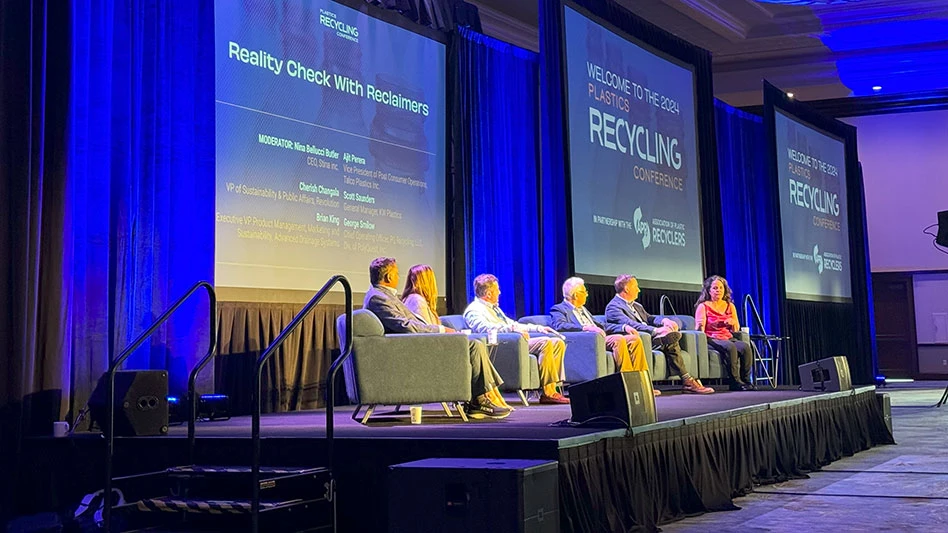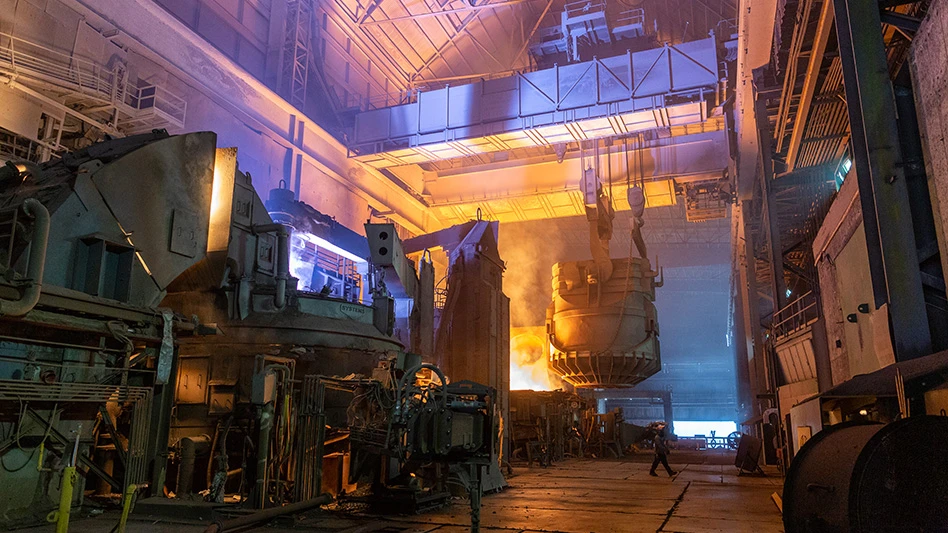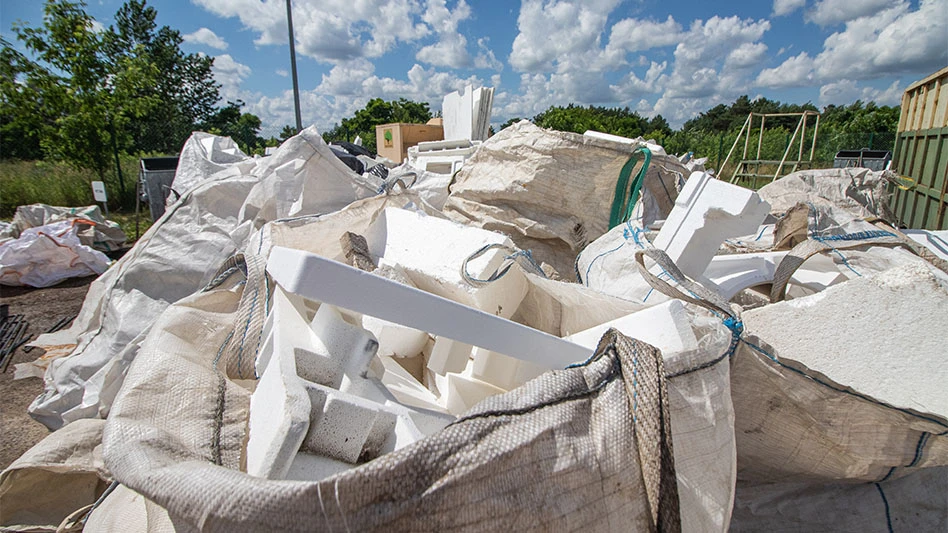
Photo by DeAnne Toto
The plastics recycling industry has changed considerably in the last 40 years. Despite that, it remains a difficult industry that has claimed many companies over time, according to panelists at the Plastics Recycling Conference session Reality Check with Reclaimers.
Scott Saunders, general manager of high-density polytheleyene (HDPE) and polypropylene (PP) KW Plastics, Troy, Alabama, said when his company first began recycling plastics in 1981, equipment wasn’t commercially available. “You had to design it yourself or adapt equipment designed for another industry," he said.
He added that customers had KW sign nondisclosure agreements (NDAs) because they didn’t want people to know they used recycled content. “Now, we sign NDAs because they don’t want people to know who they are getting their PCR [postconsumer resin] from," Saunders added.
Brian King, executive vice president of marketing at HDPE and PP recycler Advanced Drainage Systems (ADS), Hilliard, Ohio, said that company began recycling in the 1970s as a competitive advantage from a pricing perspective. He said ADS was quiet about its use of recycled content “because we didn’t think anyone would want a recycled product.”
Now the company is vocal about its use of recycled content and its recycling operations because it is a great story. “It’s amazing the number of jobs we create and bottles we keep out of landfill," he said.
King said it bothers him when the term “downcycling” is applied to what ADS does, adding, “We don’t downcycle. We take a single-use product and recycle it into a durable product that will last 100 years.”
“Durable items are what built recycling,” Saunders said, noting that PCR often offered a lower-cost raw material in that case. Now, consumer product companies are under pressure to use recycled content, which he said is more difficult and will require consumers to adjust to slightly different package aesthetics and brands to begin thinking of PCR as a premium product.
George Smilow, chief operating officer at PQ Recycling LLC, a polyethylene terephthalate (PET) bottle recycler that is part of the Wilmington, North Carolina-based PolyQuest family of companies, said when the company was founded in 1994, 50 to 60 reclaimers provided recycling services in North America and the bottle return rate was approximately 30 percent. Now, the number of reclaimers has been reduced by half while the return rate in bottle bill states has more than doubled.
Ajit Perera, vice president of postconsumer operations at California-based HDPE recycler Talco Plastics Inc. noted he is the only plastics recycler on the state’s S.B. 54 (which introduces an extended producer responsibility (EPR) program for single-use packaging and plastic food-ware waste) advisory board. “Everyone wants to demonize plastics," Perera said. "My job is to take the devil out of plastics,” he said of his role on the board.
“If you provide us with the plastics, we will find ways to take it back to a usable quality product,” he continued, adding that recyclers just need access to material to process.
Prior to the March 28, release of plastic recycling figures for 2022, session moderator Nina Bellucci Butler of Sonoma, California-based Stina Inc. shared a preview of these numbers with session attendees, noting that 30 percent of plastics were recycled in 1994 versus 27 percent in 2022, with bottles collected for recycling decreasing that year.
Smilow said the technology available to the plastics recycling industry can do just about anything. "The problem is getting more bottles," he said.
“Film is in an interesting place,” said Cherish Changala, vice president of sustainability and public affairs for Arkansas-based film recycling company Revolution. While Revolution has an LNO, or letter of no objection, from the U.S. Food & Drug Administration, for the PCR it produces from postconsumer film, she said the company is seeing resistance commercializing these resins. “The demand is not there.” (This issue was raised in another session as well.)
When it comes to properly translating the value of PCR, King said recyclers often talk about diverting plastic from landfills, “but we have to talk about destination” instead and how recycled materials perform relative to virgin polymers.
“It’s on us to tell that story,” he continued. “No one cares that the bale price is going up or down. Normal supply and demand does not work for recycling. We still have 40 percent of the U.S. that has no access to recycling, but increasing supply with no demand is not the answer.”
Changala agreed, saying recyclers need to talk more about the reductions in greenhouse gas emissions, for example, that are realized as recycled content in packaging increases.
King added that while the tendency is to look for a silver bullet, no single solution will solve the issues plastics recyclers face. “We need collaboration … and [to be] talking about what things are actually working,” he said.
“We need to push the word out that plastic is here to stay, and it needs to be recycled,” Perera said. “Recycling is real, and it will continue.”
The Plastics Recycling Conference, hosted by Resource Recycling in partnership with the Association of Plastic Recyclers, was March 25-27 in Grapevine, Texas, at the Gaylord Texan Resort and Convention Center.
Latest from Recycling Today
- Alpla calls 2024 year of recycling growth
- Altilium says agreement puts it on lithium recycling path
- NWRA, SWANA partner to address lithium-ion batteries
- Corinth, Texas, renews waste contract with CWD
- Fresh Perspective: Sarah Zwilsky
- Plastics Industry Association announces leadership changes
- QCC celebrates 50th anniversary
- Venture Metals acquires 2 nonferrous processors





